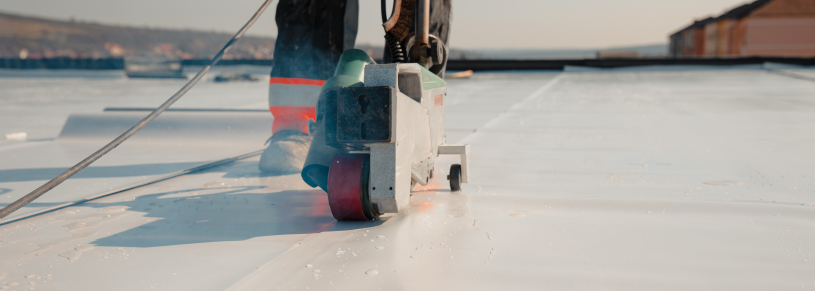Truly green roofs for urban sustainable growth
It is Green Building Week which means the World Green Building Council puts the annual spotlight on the journey towards sustainable buildings for everyone, everywhere.
When considering a building’s carbon footprint, one way of decarbonizing it is to reduce the direct energy used under its construction and while operational. However, doing an environmental Life Cycle Analysis to reduce embodied carbon can be just as important to determine the sustainability credentials of a building and its materials.
Embodied carbon in building materials
Embodied carbon refers to the greenhouse gas emissions arising from the manufacturing, transportation, installation, maintenance, and disposal of building materials. The vision of WorldGBC (World Green Buildings Council) is that by 2030, all new buildings, infrastructure and renovations will contain at least 40% less embodied carbon, and all new buildings will operate on net zero carbon. This ambition is sharpened by 2050 to net zero per cent for both embodied and operational carbon.
Buildings are currently responsible for 39% of global energy related carbon emissions: 28% from operational emissions (energy needed to heat, cool and power them) and the remaining 11% from materials and construction. By zooming in on one element which every building needs, we believe a significant impact can be made on the embodied carbon as well as on operational emissions.
Sustainability throughout the life length of a roof
The durability of a PVC roof translates into a long service life which, if installed correctly, is superior to the alternative materials mentioned before. Besides, PVC is the most recycled commercial roofing membrane material by the time it reaches the end of its long service life.

PVC roofs themselves offer high solar reflectance (more than 80% of the sun’s rays) and thermal emittance values (70% of the absorbed solar radiation). This contributes to drastically reduced cooling loads of the building. It also helps avoid of the urban heat island effect, which occurs when dense concentrations of buildings absorb and retain heat.
Aside from these beneficial properties, the building blocks of a PVC roof are important to consider and can have a big impact on the carbon footprint of the final product. When planning a roofing project it is important to know that the two main components in a PVC roof - the PVC resin and the plasticizer - can today both be obtained as renewable raw materials. Perstorp has recently launched a bio-attributed plasticizer, which can be used as part of that system, with or without a renewable PVC resin.
Solutions through sustainable innovation
Emoltene™ 100 Pro is a next generation plasticizer certified according to the ISCC PLUS system (International Sustainability & Carbon Certification). The product is designed to reduce the carbon footprint and supports sustainable sourcing of renewable raw material.
Performance-wise the backbone lies in the contribution which Emoltene™ 100 Pro adds to the durability of a PVC roof. This is thanks to the superior characteristics in volatility, water absorption, migration and UV/aging stability.
Emoltene™ 100 Pro is produced according to a traceable mass balance concept using biogas as a raw material instead of fossil natural gas. The ISCC PLUS certification means that our sustainable raw materials are certified in all parts of the value chain back to the point of origin. All customers are also given information about the Green House Gas-value of the product. By increasing the traceability in the value chain Perstorp offers transparency for better decision making when evaluating EPDs (Environmental Product Declarations).
Perstorp believes in improving everyday life – making it safer, more convenient and more environmentally sound. Simply put, we work to make good products even better, enabling sustainable solutions everywhere. We do this with a clear commitment to the Paris agreement and the ambition of becoming Finite Material Neutral. You’ll find us from your car and mobile phone to towering wind turbines and in this case, the roofs of the buildings around you.
Learn more about Emoltene™ 100 Pro here >>
